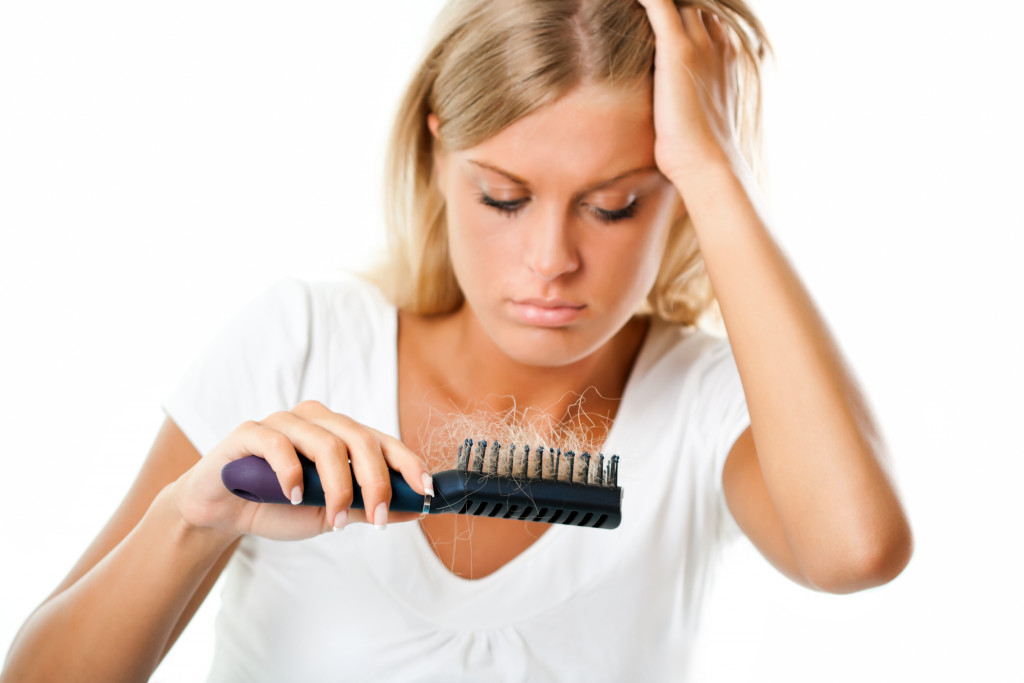- Proper hair care will not only improve the appearance of your hair but also prevent damage.
- Oily scalp and greasy hair can be reduced using a gentle shampoo and washing frequently.
- Dry and brittle hair can be treated using a moisturizing conditioner and avoiding hot tools.
- To reduce split ends and breakage, use gentle shampoo, detangle with wide-tooth comb, trim regularly, and avoid elastic bands.
- Eating a healthy diet rich in protein and biotin, drinking plenty of water, and managing stress helps maintain healthy hair.
For most people, hair is a vital part of everyone’s physical appearance. It is natural to desire healthy, strong, shiny hair that looks good and boosts confidence. However, many factors can affect hair quality, and neglecting hair care routines can lead to hair problems such as thinning, brittleness, and even hair loss.
A good hair care routine ensures that your hair remains healthy and always looks good. Proper hair care will not only improve the appearance of your hair but also prevent damage that can cause hair loss. A well-maintained hair routine will nourish your hair, keep it shiny, and avoid hair breakage and split ends.
Also, having a fine hair care ritual will help prevent dandruff and other scalp infections. Understanding common hair problems can help you design a practice that caters to your hair type.
Common Hair Problems
There are numerous hair problems that people face. Understanding these problems is crucial to designing an effective hair care routine.
Oily Scalp and Greasy Hair
An oily scalp and greasy hair can make you feel unclean and uncomfortable. To combat these problems:
- Use a gentle shampoo that will not strip your scalp of natural oils.
- Wash your hair frequently to get rid of excess oil.
- Avoid too much brushing as it can stimulate the sebaceous gland, resulting in increased oil production.
Dry and Brittle Hair
Dry and brittle hair can result from genetics, medical conditions, or poor hair care. To avoid this problem, use a gentle shampoo devoid of alcohol and sulfates. A moisturizing conditioner can help restore moisture to your hair, leaving it smooth and shiny.
Dry your hair with a towel or hair dryer in a low heat setting to minimize heat damage. Avoid using hot tools such as flat and curling irons, or use them sparingly.
Split Ends and Breakage
Split ends and hair breakage are indicative of hair damage and poor hair care. To prevent this problem:
- Use a gentle shampoo and avoid brushing your hair while wet, as it is more prone to breakage.
- Use a wide-tooth comb to detangle your hair, and avoid using elastic bands that can cause hair damage.
- Trim your hair regularly to eliminate split ends and prevent hair breakage.
Dandruff
Dandruff is a scalp condition that can cause discomfort and embarrassment. There are two types of dandruff, oily and dry, and here is how you to the difference between oily dandruff vs. dry dandruff.
Oily dandruff, also known as seborrheic dermatitis, is typically caused by excess oil production on the scalp and can result in greasy flakes and itchiness. It is often associated with a fungal infection and an antifungal shampoo that helps kill the fungus and alleviate symptoms.
On the other hand, dry dandruff results from a dry scalp and can lead to small, white flakes.

Creating an Effective Hair Care Routine
Your hair is your crowning glory; it makes you look beautiful and more confident. Here are some effective hair care routines for maintaining healthy hair.
Cleansing
The first step to creating an effective hair care routine is to choose the right shampoo and conditioner for your hair. Shampoo eliminates dirt, debris, and excessive oil from your hair and scalp, while the conditioner hydrates and moisturizes your hair. Selecting the right formula is critical to achieving the desired results.
Moisturizing
Moisturizing your hair is vital if you want it to be healthy, shiny, and strong. Applying a leave-in conditioner regularly can protect your hair from breakage, split ends, and damage.
Treating Specific Hair Problems
Hair problems are common and can affect anyone. Specific hair issues require targeted solutions to work effectively. For instance, if you are dealing with an oily scalp, look for a shampoo to balance oil production and eliminate dandruff.
In addition, if you have dry hair, use a hydrating leave-in conditioner, hair mask, and deep conditioning treatment. Trimming your hair regularly is crucial for split ends; a split-end cream can provide additional protection.
If you are dealing with dandruff, use a specialized shampoo incorporating tea tree oil and salicylic acid.
Protecting
Protecting your hair against heat, UV rays, and environmental stressors can help maintain its health and prevent damage. Utilizing a heat protectant before styling your hair with hot tools such as curling irons and straighteners can reduce the risk of heat damage.
Impact of Diet on Hair Health
Eating a healthy diet can undoubtedly improve the health of your hair. Choose foods high in protein and biotin, such as eggs, nuts, and seeds, as they can strengthen your hair, making it less prone to breakage and damage.
Hydration and Its Role in Hair Care
Hydration is crucial for maintaining healthy hair. Ensure you drink plenty of water daily, as it can help your hair retain moisture, leading to optimal hair health. Dehydration can lead to dry, brittle, and weak hair.
Managing Stress and Its Effects on Hair
Too much stress can impact your body and your hair’s health. High-stress levels can cause hair fall, hair loss, and hair thinning. Make sure you practice relaxation techniques like meditation, yoga, and deep breathing exercises to combat stress. Practicing self-care can also significantly improve your hair and reduce stress levels.
Getting Enough Sleep for Optimal Hair Health
Sleep is essential for maintaining optimal hair health. During sleep, your body repairs and regenerates itself, including your hair cells. Adequate sleep can help balance the hormones affecting your hair growth and quality.

A hair care routine may seem insignificant, but it is essential for maintaining beautiful, healthy, and strong hair. With the proper knowledge of common hair problems, it becomes easier to design a hair care routine that caters to the needs of your hair.
Adopting a proper hair care routine can nourish your hair and maintain its shine and beauty. Remember, healthy hair is beautiful hair.
